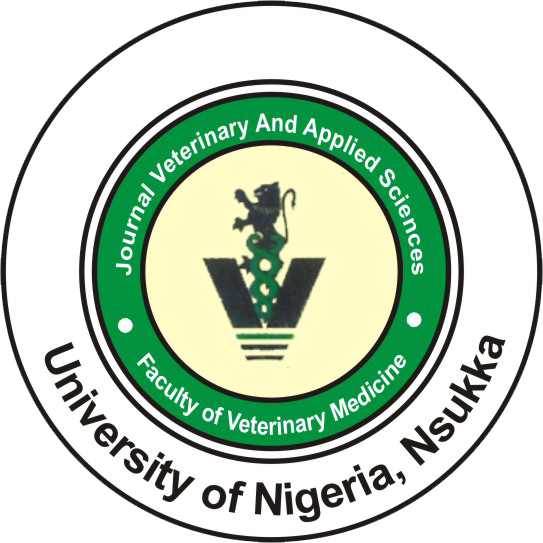University of Nigeria
ISSN: 2315 - 6856
e-ISSN: 2636 - 5553
Journal volumes
Powered by: RockSystems Global Services Ltd.
rocksystemsglobal@gmail.com (+2348035271306)
www.rocksystemsglobal.com
Volume 13, Issue 1: 2023 - Article 6
Abstract:
Chickens are highly susceptible to velogenic Newcastle disease virus (vNDV), but the relative susceptibility of different sexes of chickens has not yet been investigated or reported. This study compared the clinical signs and pathological lesions in cockerels and pullets experimentally infected with vNDV. Sixty cockerels and sixty pullets were used for the study. They were each randomly assigned to two groups of 30 each – infected and uninfected groups. Cockerels and pullets in the infected groups were inoculated with the Kuru duck-113 strain of the Newcastle disease virus. Clinical signs were recorded, and blood samples were collected and subjected to haematology and serum protein assay. Also gross lesions were recorded at the necropsy of dead infected birds. Sections of tissues were processed for histopathology. Results showed that, following virus infection, the pullets and cockerels exhibited comparable clinical signs, except for body weight, which was significantly (p < 0.05) lower in infected cockerels when compared with the uninfected. Cumulative morbidity and mortality were higher in infected cockerels than in pullets on days 2, 3 and 4 post-infection (PI). At necropsy, gross enlargement of the spleen and proventricular mucosal hemorrhages were more severe in infected cockerels than in infected pullets. The erythrocytic profile of the infected cockerels was significantly higher (p < 0.05) than that of the uninfected cockerels, but there was no significant difference (p > 0.05) in the erythrocytic profile of the infected and uninfected pullets. Serum total protein of the infected pullets was significantly higher (p < 0.05) higher than that of the uninfected pullets, but the serum globulin levels of both infected cockerels and pullets were significantly higher (p < 0.05) than those of their uninfected controls. It was concluded that vNDV-infected cockerels showed higher susceptibility and more severe pathological lesions than infected pullets.
Keywords: Newcastle disease; cockerels and pullets; chickens; pathology; susceptibility; sexual dimorphism.
How to cite this article:
Ihedioha OC, Onyema I, Ihedioha JI and Okoye JOA (2023). Cockerels experimentally infected with the velogenic Newcastle disease virus exhibited higher susceptibility and more severe pathological lesions than infected pullets. Journal of Veterinary and Applied Sciences, 13(1): 151 – 162.
*Correspondence: E-mail: ihedioha@arizona.edu Phone: +1520-934-4963

Cockerels experimentally infected with the velogenic Newcastle disease virus exhibited higher susceptibility and more severe pathological lesions than infected pullets
Olivia C. Ihedioha* 1, Ifeanyi Onyema2, John I. Ihedioha2 and John O. A. Okoye2
1 Department of Immunobiology, College of Medicine, University of Arizona, Tucson, United States of America. 2 Department of Veterinary Pathology and Microbiology, Faculty of Veterinary Medicine, University of Nigeria Nsukka, Enugu State, Nigeria.
Download .pdf copy here >>






